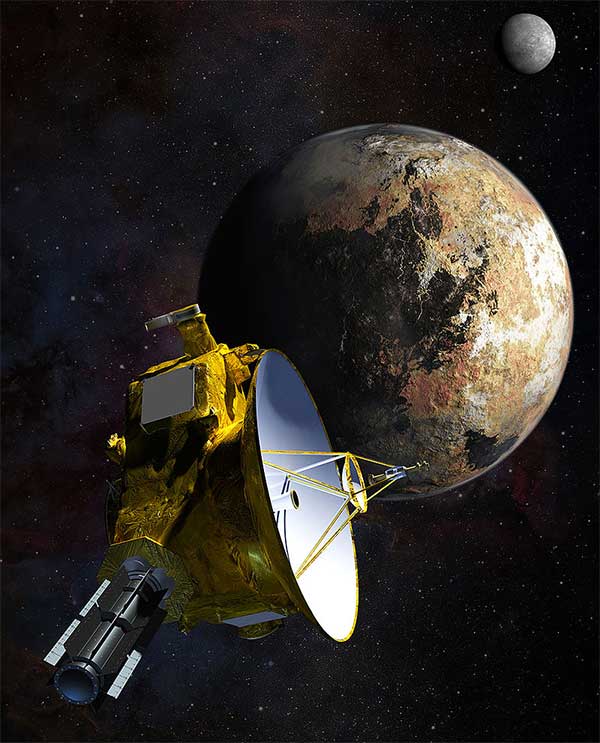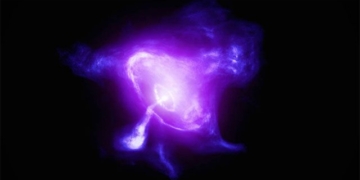“Planet Nine” has sparked a disagreement between the International Astronomical Union (IAU) and NASA, while simultaneously reigniting hopes of potential life through a massive ice volcano.
According to Space.com, a super ice volcano that erupted just a few million years ago on Pluto may serve as vivid evidence of an underground ocean just beneath the heart-shaped ice plain Sputnik Planitia.
Pluto was once considered the ninth planet of the Solar System but was “downgraded” to a dwarf planet by the IAU in 2006. Nevertheless, several top NASA officials assert that it deserves to be regarded as a planet.

New Horizons spacecraft and Pluto – (Photo: Wiki).
NASA’s argument is based on a series of studies from data sent back by the agency’s New Horizons spacecraft from the distant region beyond Neptune.
The data reveals that this celestial body has an extremely complex structure, even suggesting the possibility of an underground ocean and a glimmer of hope for extreme forms of life, akin to those found in some boiling water regions near volcanoes beneath the Antarctic ice.
In a recent study led by Professor Dale Cruikshank from the University of Central Florida, a large crater named Kiladze in Sputnik Planitia, previously thought to be an impact crater left by a meteorite, is now suggested to have a different origin based on the latest data.
The crater appears somewhat elongated, with prominent water ice evident compared to the methane ice covering the rest of the planet.
The research team asserts that it must be a volcanic crater, a remnant of an active supervolcano that erupted only a few million years ago, spewing “glacial lava” from beneath the underground ocean.
The existence of a volcano also indicates that Pluto’s interior is warmer than we might expect, overturning the hypothesis that this planet is too small to have retained any heat for a long time.
One possibility is that this ninth planet contains radioactive elements in its core, releasing heat as they decay.
Regardless of the heat source, it plays a crucial role in maintaining water in a liquid state beneath the surface, which is something NASA has always hoped to find in other worlds during its quest for evidence that we are not alone in the universe.





















































